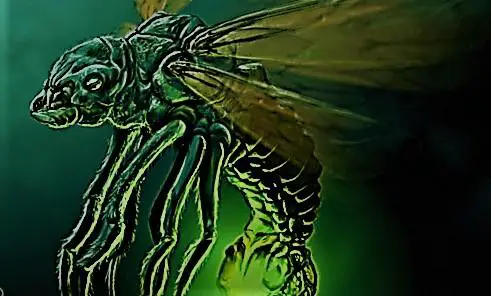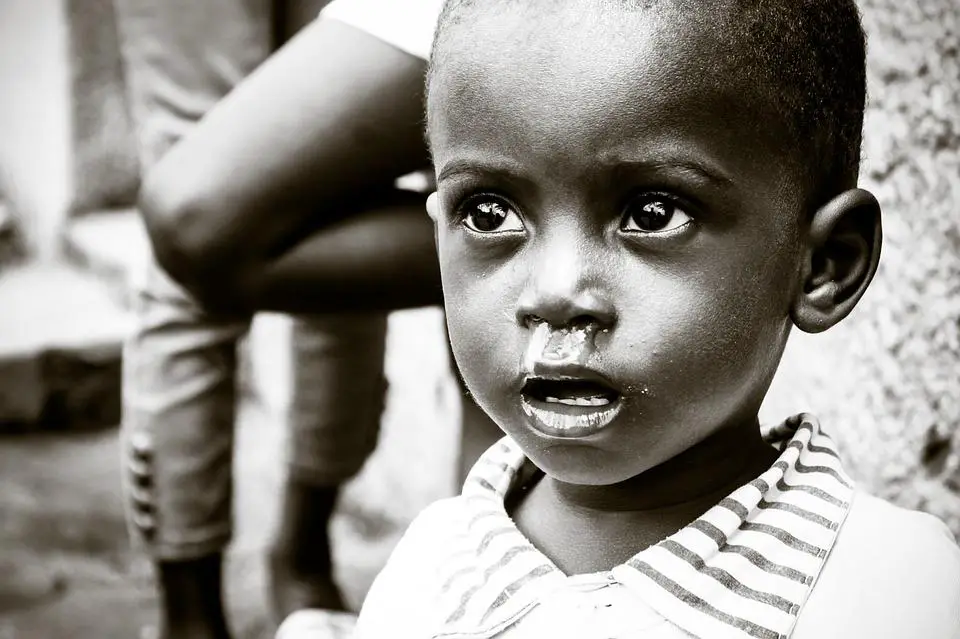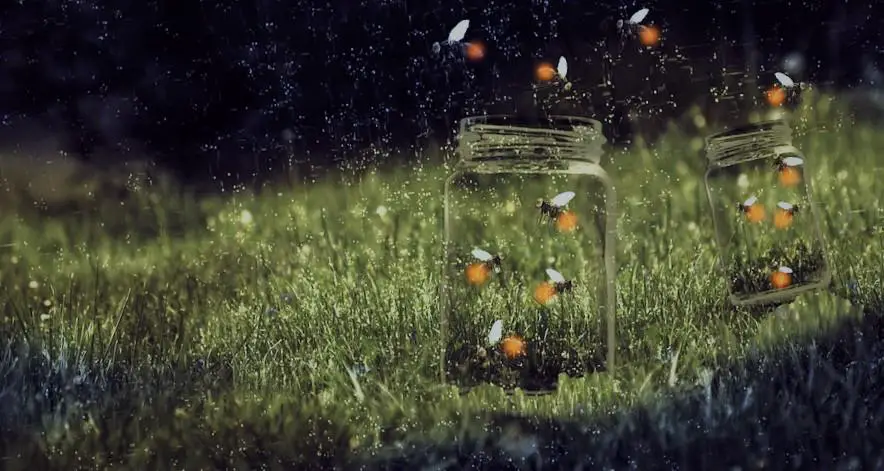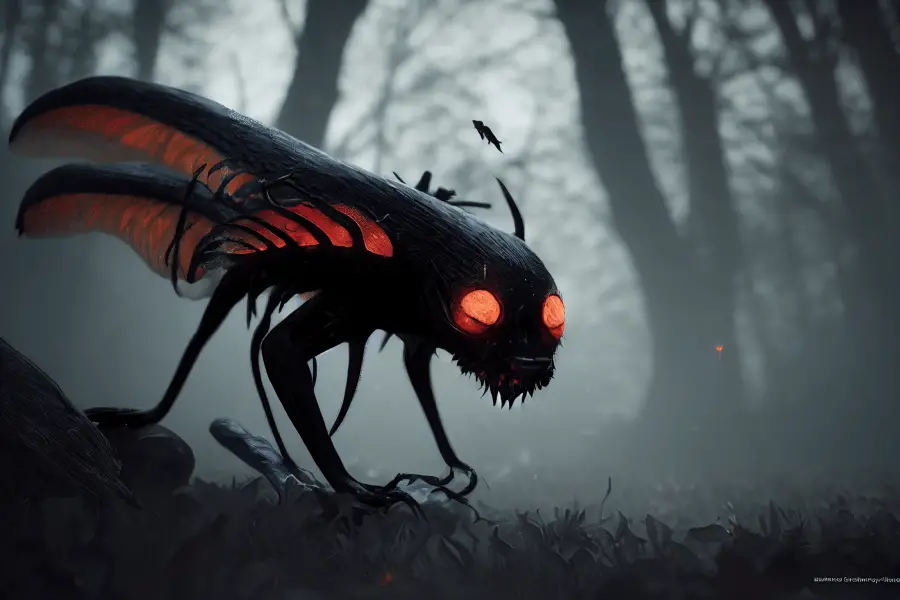Share the Lore!
By: Alex Postrado
Adze: The Shapeshifting, Vampiric Firefly of Ewe Folklore
Ruthless, parasitic, and… glimmering?
That might not sound like your typical midnight monster, but that is how Ewe folklore, told by the people of southeastern Ghana, southern Benin, and the southern half of Togo, describes their region’s creature of terror 一 the Adze.
A being, rooted in both history and mythology, the Adze 一 in its simplest definition 一 is a vampire spirit.
Vampire, in a sense that it feeds off of human blood; that it usually comes out to hunt at night; and that it can shapeshift into a different form whenever it wants to.
And spirit, seeing that it can possess any human being, at any time it wishes.
On most occasions, the Adze announces its presence with a faint glow of light 一 as it flies around town, taking on its firefly form.
But, everyone who knows about the lore of the Adze also knows better 一 and that is to steer clear of the flickering firefly.
Because, if anything, that firefly gleam signals trouble.
An ironically bright omen that misfortune is on the way.

What is the Adze?
In some parts of West Africa, there is a long-established belief about a vampiric creature that typically goes out at night, mimicking the form of an illuminated insect.
The Ewe people of the area call it the Adze.
Much like the corpse candles of Welsh and Irish folklore, the Adze could look like small balls of light from afar.
Up close, however, it could appear more or less as a common firefly or as an unusual kind of glowing beetle.
But, don’t let yourself be fooled by its looks!
The Adze shapeshifts into this form deliberately and full of ill intent.
The glow? Perhaps, it is to lure children or draw those who are unfortunate enough not to know the lore of the Adze.
And the itty-bitty size? Well, that is for the element of surprise.
Fireflies 一 similar to other insects 一 can sometimes appear right in front of you, without you noticing it was even drawing near.
With that form, it would be easier for the Adze to sneakily attack a potential victim 一 not to mention, it would also allow the vampiric spirit to enter any supposedly secure house through small ‘entrances’, such as keyholes, wall crevices, or tiny gaps under doors.
Once it enters, the horror shall begin.
The Adze will suck blood from people 一 be they awake or asleep.
While it preys on both men and women, it still maintains its preferences. And it is said that the favorite victims of the Adze are children.
To them, the younger and more innocent, the better.

Some even believe that the Adze only feeds off of the blood of “the tribe’s most beautiful children“.
And that applies even when the Adze is forced into a firefly form, while it is taking over another human’s body.
The Adze Shapeshifts into Other Forms
No one knows exactly what the Adze 一 in its spirit form 一 looks like.
The firefly form is a mere 一 and, at that, convenient 一 facade to mask the real Adze. And even the human form that it sometimes takes when it enters a person’s body is nothing but a temporary ‘shelter‘.
Yes, the Adze can possess humans.
In the same way, humans can also willingly summon the Adze to possess their bodies. Those who do so are believed by the Ewe people to be sorcerers or witches.
They do this to gain the shapeshifting abilities and supernatural powers the vampire spirit has 一 attainable, at the expense of their physical body, being a vessel for the Adze to come near communities and walk alongside people without anyone getting suspicious.
What happens is, as soon as the Adze host 一 locally known as adzeto 一 selects a victim 一 typically, a person from their tribe that they envy 一 a firefly would emerge out of their mouth, nose, or head.
This firefly, rather than the Adze-possessed ‘witch‘, would be the one to exact the jealousy-induced, bloodsucking curse to the unknowing victim.
It will drain the person’s blood until they fall sick and 一 in most cases 一 eventually die.
Several accounts also claim that the family of the victim could suffer the same fate, as well.
However, if someone takes notice of what is happening and successfully captures the Adze in its firefly form, it will turn into its rarely seen but absolutely dangerous, quasi-human form.
In this form, the Adze 一 believed to be at its most desperate, and thus most vicious, state 一 would almost always try to fiercely attack the person behind its capture.
It is because it knows that only in this humanoid form could it be destroyed and defeated 一 using any of the ways humans could be slain.
Be that as it may, there is also a belief that if the human captor effectively lets the Adze realize that it is overpowered, the vampiric being will then start to beg for mercy.
Should the person grant the Adze freedom, it is believed that it would become a friend and would vow never to bother the tribe again.
But what happens to the poor victim, who had to suffer the affliction before the Adze was taken captive?
How about the adzeto, who helped the Adze gain access to the community in the first place?

The Origins of the Adze Myth
Illness, mental distress, infertility, and loss of good standing in the community 一 all of these could also be caused by the Adze, among other things.
There are few records as to what exactly befalls those who had to go through the ordeal brought by the Adze. But one could only imagine much, considering a common notion in Ewe culture, which says that no cure awaits those bitten by the malevolent Adze.
This same notion was, perhaps, one of the factors that prompted historians and folklorists to look at different angles of the Adze lore, in hopes of tracing it all toward a single origin.
Details that fit the puzzle were:
- The belief that, aside from blood, the Adze is also believed to drink coconut milk and palm oil;
- That there is no known spell, weapon, or potion to keep the Adze away;
- That the only way to stop the Adze is to capture it;
- And that the Adze has been terrorizing Ewe communities for many centuries now.
Scholars concluded that it is possible that the Ewe people were actually using the Adze as a metaphor for something that they 一 for quite a long time 一 felt powerless and helpless against.
If we would take history into account, the factors likely point to one plausible explanation:
Malaria and other insect-borne illnesses.
Over half of all recorded malaria deaths in the entire world were derived only from four African countries 一 with the highest, clocking in at 31.9%, coming from Nigeria, a country in West Africa.
This provides adequate proof to the theorized link between the Adze and West Africa’s centuries-old fear of insect-borne diseases, as well as their dread of not being able to combat it.
On top of that, when European Christian missionaries slipped into Africa and established colonies during the 19th century, the Adze further evolved into a different kind of danger.

One that “resembles something more akin to the Devil”.
The Ewe people were introduced to the idea that insect-borne diseases 一 in general 一 are caused by the Devil and that the only ‘real salvation‘ from these is accepting the Christian God.
But, as the years went on, and as the traditional Vodun religion of the Ewe people continued to become more entangled with Christianity, this form of the Adze, ultimately, turned into a “scapegoat for a range of other evils” 一 most of which likely included misery on the side of the victims, and worse, deaths.
Another unfortunate thing about it was that it also put blame on supposed ‘Adze hosts‘, making practically everyone, who 一 to the people 一 had a reason to get jealous of others, a viable suspect.
Among the commonly accused were always the poor, who ‘likely envies the wealthy’; the sick, who ‘envies the well’; and the elderly, who are said to ‘envy the young’.
Quite dark, if you actually think about it.
That, in this particular story, the very people who shaped the Adze, using their haunting experiences against worldly maladies, are also the same people to take the blame for its existence.
And what could possibly be scarier than that?
References:
In West Africa, The Adze Is An Insectoid Source Of Misfortune Adze; Firefly Vampire Of Africa Adze - Occult World The Vampire Encyclopedia - Matthew Bunson Malaria - WHO

